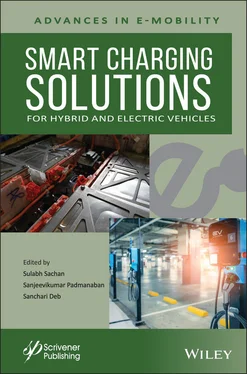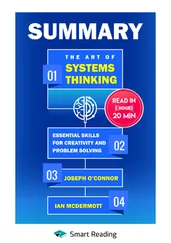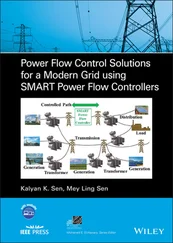Smart Charging Solutions for Hybrid and Electric Vehicles
Здесь есть возможность читать онлайн «Smart Charging Solutions for Hybrid and Electric Vehicles» — ознакомительный отрывок электронной книги совершенно бесплатно, а после прочтения отрывка купить полную версию. В некоторых случаях можно слушать аудио, скачать через торрент в формате fb2 и присутствует краткое содержание. Жанр: unrecognised, на английском языке. Описание произведения, (предисловие) а так же отзывы посетителей доступны на портале библиотеки ЛибКат.
- Название:Smart Charging Solutions for Hybrid and Electric Vehicles
- Автор:
- Жанр:
- Год:неизвестен
- ISBN:нет данных
- Рейтинг книги:4 / 5. Голосов: 1
-
Избранное:Добавить в избранное
- Отзывы:
-
Ваша оценка:
- 80
- 1
- 2
- 3
- 4
- 5
Smart Charging Solutions for Hybrid and Electric Vehicles: краткое содержание, описание и аннотация
Предлагаем к чтению аннотацию, описание, краткое содержание или предисловие (зависит от того, что написал сам автор книги «Smart Charging Solutions for Hybrid and Electric Vehicles»). Если вы не нашли необходимую информацию о книге — напишите в комментариях, мы постараемся отыскать её.
The most comprehensive and up-to-date study of smart charging solutions for hybrid and electric vehicles for engineers, scientists, students, and other professionals. Smart Charging Solutions for Hybrid and Electric Vehicles:
Smart Charging Solutions for Hybrid and Electric Vehicles — читать онлайн ознакомительный отрывок
Ниже представлен текст книги, разбитый по страницам. Система сохранения места последней прочитанной страницы, позволяет с удобством читать онлайн бесплатно книгу «Smart Charging Solutions for Hybrid and Electric Vehicles», без необходимости каждый раз заново искать на чём Вы остановились. Поставьте закладку, и сможете в любой момент перейти на страницу, на которой закончили чтение.
Интервал:
Закладка:
Table of Contents
1 Cover
2 Title Page Smart Charging Solutions for Hybrid and Electric Vehicles Edited by Sulabh Sachan P. Sanjeevikumar and Sanchari Deb
3 Copyright
4 Preface
5 1 Smart Charging: An Outlook Towards its Role and Impacts, Enablers, Markets, and the Global Energy System 1.1 Introduction to Smart Charging 1.2 Types of Charging 1.3 Impact of Smart Charging on Global Energy Systems 1.4 Types of Smart Charging 1.5 Entities of a Smart-Charging System 1.6 Enablers of Smart Charging 1.7 Control Architectures 1.8 Outlook towards Smart Charging 1.9 Conclusion References
6 2 Influence of Electric Vehicles on Improvements in the Electric Distribution Grid 2.1 Introduction 2.2 Evolution of the Distribution System 2.3 Electric Mobility 2.4 Charging Infrastructure for Electric Vehicles 2.5 Conclusion References
7 3 Smart Charging Strategies for the Changing Grid 3.1 Introduction 3.2 Charging Strategy based on Vehicle Type 3.3 Mapping of Charging Strategies 3.4 Evaluation of Charging Strategies References
8 4 Pricing Schemes for Smart Charging Abbreviations Nomenclature 4.1 Introduction 4.2 Concepts and Issues in Charging Pricing 4.3 Different Models of Charging Stations’ Dynamic Pricing 4.4 Classification of Charging Pricing Models 4.5 Electricity Pricing of Vehicle Discharging to Grid 4.6 Electricity Pricing Currently Used at Charging Stations 4.7 Effect of Charging Pricing on Economic Competitiveness of Electric Vehicles 4.8 Conclusion References
9 5 Management of Electric Vehicles Using Automatic Learning Algorithms: Application in Office Buildings 5.1 Introduction 5.2 Proposed Charging Strategy 5.3 Test Bed and Implementation Results 5.4 Conclusion References
10 6 High-Power Charging Strategies of EV Batteries and Energy Storage Abbreviations 6.1 Introduction 6.2 EV Battery Set Model 6.3 Case Study of Charging High Power Li-Ion Battery for Energy Storage and Electric Work Machines 6.4 Proposed Constant Current and Constant Voltage Method for EV Battery Charging 6.5 Simulation Tests of EV Battery Charging 6.6 Conclusions References
11 7 Integration of Fast Charging Stations for Electric Vehicles with the Industrial Power System Abbreviations 7.1 Introduction 7.2 Structure of Hybrid EV Fast Charging Station 7.3 Use of Drive Voltage Frequency Converter for Charging EV Batteries 7.4 Fast Charging Converter Integrated with 600V DC Microgrid 7.5 Simulation and Experimental Study of Drive Voltage Frequency Converter Used to Charge EV Batteries 7.6 Conclusions References
12 8 Regulatory Framework for Smart Charging in Hybrid and Electric Vehicles: Challenges, Driving Forces, and Lessons for Future Roadmap List of Abbreviations 8.1 Introduction 8.2 EV Charging Technology and Smart Charging 8.3 Smart Charging Standards 8.4 Regulatory Framework 8.5 Conclusions and Discussion References
13 9 EV Fast Charging Station Planning with Renewable Energy Sources: A Case Study of Durgapur System 9.1 Introduction 9.2 Modeling of System 9.3 Case Study on Solar and Wind Data 9.4 Problem Description and Methodology 9.5 Results and Discussion 9.6 Conclusions 9.7 Acknowledgment References
14 10 Game Theory Approach for Electric Vehicle Charge Management Considering User Behavior Nomenclature 10.1 Introduction 10.2 Problem Formulation 10.3 Profit Maximization Game 10.4 Existence and Uniqueness of Nash Equilibrium of Profit Maximization Game 10.5 Results and Discussion 10.6 Conclusion Appendix A References
15 11 A Novel SMES Based Charging System for Electric Vehicles in Smart Grids NomenclatureList of Abbreviations List of Variables 11.1 Introduction 11.2 System Modeling 11.3 Impact Analysis of SME’S on SG Performance while Accommodating EVs 11.4 Conclusion References
16 12 A Novel Intelligent Route Planning Framework for Electric Vehicles with Consideration of Waiting Time in Delhi 12.1 Introduction 12.2 Problem Description 12.3 Reinforcement Learning (RL) Based EV Navigation System 12.4 Results and Discussion 12.5 Conclusion References
17 13 Smart Charging Management for Autonomous Vehicles: A Smart Solution for Smart Cities & Societies: COVID 19 13.1 Introduction 13.2 Autonomous Vehicles: A Promise for Next-Generation Transportation Systems 13.3 How Autonomous Vehicle Standards Ensure Safety 13.4 Autonomous Cars and Smart Cities 13.5 Benefits of Autonomous Vehicles 13.6 Adoption Perspectives for Autonomous Vehicles: COVID 19 Situation 13.7 During the Fight of Pandemic Situation: How Autonomous Vehicles are Used 13.8 Smart Charging Management for Autonomous Vehicles 13.9 Challenges Involved in Self Driving Vehicles (V2X) Driving the Development of Autonomous Vehicles 13.10 Discussion 13.11 Conclusion 13.12 Acknowledgment References
18 14 Electric Vehicle Integrated Virtual Power Plants: A Systematic Review Abbreviations 14.1 Introduction 14.2 Overview of VPP 14.3 Global Scenario 14.4 Framework for VPP 14.5 Research Initiatives 14.6 EV Integrated VPP 14.7 Conclusions References
19 15 Optimal Location of EV Charging Stations by Modified Direct Search Algorithm Abbreviations 15.1 Introduction 15.2 Problem Formulation 15.3 Methodology 15.4 Numerical Analysis 15.5 Conclusion References
20 16 Recent Trends and Technologies of Electric Vehicles and Their Wireless Charging Methods: A Review 16.1 Introduction 16.2 FAME Status 16.3 Basic Operation of WPT of EVs 16.4 Components of WPT System 16.5 Advancements in WPT and Electric Vehicle Technology 16.6 Electric Vehicle Status in India 16.7 Standards of Electrical Vehicles, Infrastructure, and WPT 16.8 Conclusion References
21 17 Techno-Economic Issues of Grid Connected Large Photovoltaic Plants of Smart City Prayagraj to the EV Charging Station: A Case Study (A Case Study of 5 MW Photovoltaic Power Plant at Prayagraj) 17.1 Introduction 17.2 PV Generation Feasibility Study for Prayagraj for EV Charging Stations 17.3 Modeling and Challenges of Grid Integrated Photovoltaic System 17.4 Real-Time Challenges of 5MW Solar Plant at Naini, Prayagraj, India 17.5 Whole System Layout and Description 17.6 Cost Analysis of Complete PV System 17.7 Conclusion References
22 Index
23 Also of Interest
24 End User License Agreement
List of Illustrations
1 Chapter 1 Figure 1.1 Flow diagram to understand and judge the level of smartness based on ... Figure 1.2 A brief on different approaches to smart charging techniques. Figure 1.3 A schematic to differentiate V2H/V2B and V2G. Figure 1.4 Communication between various entities in smart charging infrastructu... Figure 1.5 Schematic of centralized controller in smart charging architecture. Figure 1.6 Schematic of decentralized controller in smart charging architecture.
2 Chapter 2 Figure 2.1 Traditional and new models of distribution grid. Figure 2.2 Global electric vehicles registrations.
3 Chapter 3Figure 3.1 Evolution of electric vehicles.Figure 3.2 Charger power based on battery capacity.Figure 3.3 Two- and three-wheeler charger power.Figure 3.4 Charging power for opportunity charging of electric car fleets.Figure 3.5 Charging power for opportunity charging of electric buses.Figure 3.6 Applicable of strategies to control charging at peak demand.Figure 3.7 First come, first served charging approach.Figure 3.8 Multiple possibilities of solar EV charging.Figure 3.9 Schematic for smart battery swapping.
4 Chapter 4Figure 4.1 Energy management and dynamic pricing algorithm [1].Figure 4.2 Charging service provider business framework [1].Figure 4.3 Framework for management of EV charging station [6].Figure 4.4 EV charging system framework based on price negotiation [2].Figure 4.5 Framework of proposed charging pricing strategy [5].Figure 4.6 Representation of multi-agent EV network model [17].Figure 4.7 EV network’s multi-agent control system under RL-AHC algorithm [17].
Читать дальшеИнтервал:
Закладка:
Похожие книги на «Smart Charging Solutions for Hybrid and Electric Vehicles»
Представляем Вашему вниманию похожие книги на «Smart Charging Solutions for Hybrid and Electric Vehicles» списком для выбора. Мы отобрали схожую по названию и смыслу литературу в надежде предоставить читателям больше вариантов отыскать новые, интересные, ещё непрочитанные произведения.
Обсуждение, отзывы о книге «Smart Charging Solutions for Hybrid and Electric Vehicles» и просто собственные мнения читателей. Оставьте ваши комментарии, напишите, что Вы думаете о произведении, его смысле или главных героях. Укажите что конкретно понравилось, а что нет, и почему Вы так считаете.












